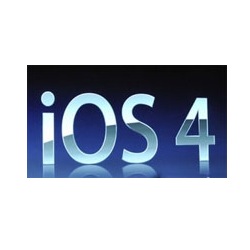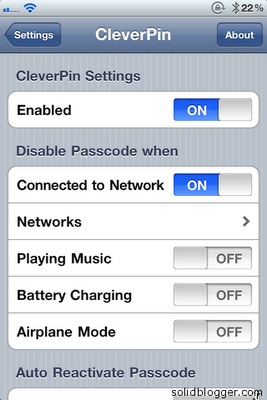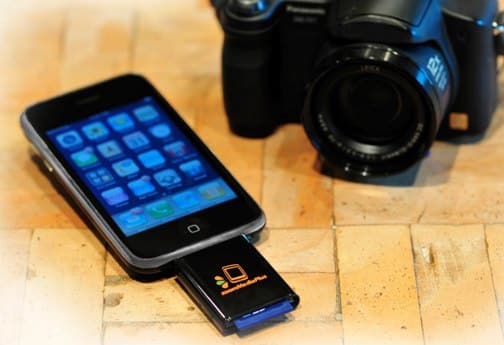Apple iPhone 4 and iPhone 4.0 jailbreak and unlock is keeping many hackers on their toes as they try to come out with the solution first in the market. Anyone including the Dev Team, Geohot or anyone else who comes first with iPhone 4 jailbreak.Now you can know about How To Make iPhone 3G On iOS 4 Faster in this post….
While a vast majority of iPhone users are enjoying the new features and performance improvement in the latest iOS, some iPhone 3G users have reported that iOS 4 has slowed down their iPhone, which has forced some of them to downgrade to iPhone OS 3.1.3.It has also motivated someone to create a spoof Apple ad demonstrating iPhone 3G running iOS 4.
Being first is a huge advantage in itself and it assures- provided the jailbreak works fine- a huge amount of money in remuneration.The money may be secondary factor for original jailbreaking team. For them the satisfaction of being able to hack a great product from Apple is great.
But for people who came in the business of jailbreaking to make few quick bucks the only consideration and reason is money and nothing but money.The first tip we ran across after upgrading our 3G to iOS 4 was this one from Cult of Mac, which suggested that performing a double hard reset (DHR) can speed up iOS 4 performance. I tried this back in June and didn’t notice any significant speed increase, but our intern Lauren claimed to have better luck with it, noticing speed improvements afterwards. In short, the DHR consists of performing a hard reset—that is, holding the Home and Sleep/Wake buttons until your phone restarts—twice. During a hard reset, you’ll see the Slide to Power Off screen, the phone will go blank, and then the Apple logo will appear when it restarts; keep the Home and Sleep buttons held down through all of this, until the Apple logo appears.
Comex, the iPhone hacking expert who has brought popular jailbreaking tools like Spirit found a post on ModMyI forums, which is recommending iPhone 3G users to disable Spotlight for iPhone to make it faster.
Disable Spotlight Searches: On Thursday, we highlighted a reader tipsuggesting that turning off Spotlight search indexingthat you don’t use can help speed things up. (Open Settings, then go to General -> Home Button -> Spotlight Search and uncheck anything you don’t use.) I rarely use Spotlight at all, so I didn’t mind switching everything off.
Delete Your SMS Messages: Today, our friends from down under at Lifehacker AU suggested that deleting text messages will also improve iOS 4 performance on the 3G. The only problem with this is that the iPhone’s SMS backup is kind of lame, so you have to do some work if you want to keep them around. (iTunes does back them up, but it’s buried in a file helpfully named 3d0d7e5fb2ce288813306e4d4636395e047a3d28.mddata. Webapps like this one will do the parsing and return a friendlier PDF, XLS, or HTML backup, but you’re also uploading your texts to a third party service.)
Turn off SMS Previews: Settings -> Messages; set Show Preview to Off
Turn off Email Previews, Threading, and Other Features: Settings -> Mail, Contacts, Calendars. Change Show to 25 Recent Messages, Preview to None, Load Remote Images to Off, Organize By Thread to Off.
Clear Your Phone History: Phone -> Recents -> Clear.
Turn off iPod Features: Settings -> iPod. Turn off Lyrics & Podcast Info, Sound Check.
The final possibility involves installing a fresh iOS 4 image (returning to factory settings) but not restoring your backups. If you were to do so, you’d have to re-sync all your media, email, contact, and calendar information manually. Basically it’s like setting up a new iPhone from scratch, which is kind of a frustrating option if you’ve spent any amount of time setting up your iPhone.
To disable Spotlight for iPhone, follow these simple steps:
-
- Launch Settings app
- Go to General –> Spotlight Search
- Deselect indexing for all or as many items as possible
We haven’t tried it out but if you’re observing a performance issue on your iPhone 3G after upgrading to iOS 4 then there is no harm in trying this tip before you decide to downgrade to iPhone OS 3.1.3.We wonder if similar improvements will be seen if Spotlight for iPhone is disable on iPhone 3GS and iPhone 4.
To give this one a try, just plug in your iPhone, wait for it to show up in the iTunes sidebar, click on it, then click the Restore button. I tried this option this afternoon, and—at first blush, at least—it’s the only option that yielded obvious results for me. Performance still feels sluggish relative to iOS 3, but after syncing back my media, calendar, contacts, and applications, it feels like an improvement. The question remains as to whether or not, in time, it’ll end up just as slow as it was when I first upgraded.
If you’re finding your iPhone 3G painfully slow, and aren’t planning on getting yourself a shiny new iPhone 4 this Friday, it may be worth a DFU restore, via the following steps:
- Plug your iPhone into your Mac, and ensure you make a backup.
- Once backed up, press and hold the Sleep/Wake and Home buttons together for ten seconds.
- Release the Sleep/Wake button, but continue to hold the Home button for another ten seconds.
- If done correctly, iTunes will show a popup that it has detected an iPhone in Recovery Mode, and your iPhone’s screen will be blank. If you hold the Sleep/Wake button too long, you’ll see an Apple logo on the screen, and later, a connect to iTunes image. Confusingly, this is called Recovery Mode, but we want DFU mode for this update. It might take a number of tries before you get it right. (If you change your mind once you’ve entered DFU mode, restart it by unplugging the phone and holding down the Sleep/Wake and Home buttons until an Apple logo appears on your screen.)
- Now that you have the iPhone in DFU mode, click Restore, and “Restore and Update”, and it will do a fresh install of the latest iOS version. (Note: If you wish to install an older version of iOS, pressing option while you click restore will allow you to choose your iOS install file. These are available online if you want to try keeping 4.0.0 or reverting to 3.2.1. Check out this article for more information.)
- Once that process is finished (it will take some time, and show a status bar in iTunes with messages including “Verifying iPhone restore with Apple” and “Restoring iPhone software”), you can restore your apps, contacts, messages, calendars and other settings from your backup. (Note: Many of my apps were re-arranged by this process, so if you’ve spent hours arranging them just how you like them, you may not want to attempt this restore.)
- Hopefully you’ll now find your iPhone working as well as it did before the iOS 4 upgrade.
And that’s all there is to it. There are, however, a few things to note:
- I can’t guarantee that this will fix your iPhone 3G’s problems, or even that it won’t make matters worse. Proceed with caution.
- The iPhone 3G still won’t support multitasking or wallpaper images, which both require an iPhone 3GS or above.
- The speed increase might simply be a result of upgrading to 4.0.1, so upgrading without the fuss of going into DFU mode may also do the trick (though this release does not note any speed increases in its support notes).
Resources :lifehacker.com,iphonehacks.com,macworld.com.au







I have3g n its suportin multitasking